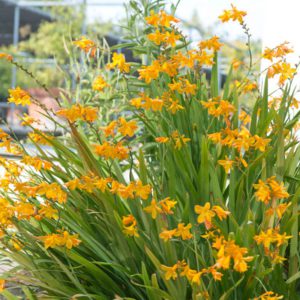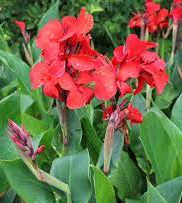Fatsia japonica
Price range: €25.00 through €85.00
Frequently Bought Together


Description
Quick Facts
- Common Name: Japanese Aralia, Paper Plant, False Castor Oil Plant
- Botanical Name: Fatsia japonica
- Plant Type: Evergreen shrub
- Mature Height: 2-4m
- Mature Spread: 2-3m
- Flowering Period: October to November
- Flower Colour: Creamy-white spherical clusters
- Foliage: Large, glossy, deep green palmate leaves
- Hardiness: RHS H4 (hardy in most of UK and Ireland, may need protection in severe winters)
- Soil Requirements: Moist, well-drained, fertile soil; tolerates most soil types
- Aspect: Partial shade to full shade; tolerates some sun in sheltered positions
- Maintenance: Low
Description
Experience the breathtaking beauty of Fatsia japonica, the ultimate architectural evergreen shrub for creating instant tropical drama and exotic impact in shaded gardens, where magnificent hand-shaped leaves measuring up to 40cm across bring bold jungle presence and year-round structure to spaces where few other plants succeed with such commanding presence. This exceptional plant offers remarkable qualities—spectacular glossy deep green palmate foliage divided into 7-11 elegant lobed fingers creating dramatic architectural silhouette that transforms ordinary gardens into exotic paradises, exceptionally fast growth rate establishing impressive presence within just 2-3 years making it perfect for instant impact, outstanding shade tolerance thriving in deep shade beneath trees, against north-facing walls, and in dark corners where most plants struggle or fail completely, creamy-white spherical flower clusters in autumn held on dramatic branching stems creating architectural interest when few other plants bloom and attracting valuable late-season pollinators, glossy black berries following flowers providing winter food for birds, and remarkable adaptability tolerating urban pollution, coastal conditions (in shelter), and a wide range of soil types, making this one of the most versatile and spectacular choices for adding bold architectural presence, exotic tropical character, and reliable evergreen structure to shaded gardens, courtyards, and urban spaces where its commanding foliage creates unforgettable impact and year-round drama.
Throughout the seasons, this captivating shrub displays its characteristic large palmate leaves—each leaf divided into 7-11 deeply lobed fingers (typically 8, hence the name) radiating from central point like an elegant outstretched hand, creating bold architectural silhouette that commands attention. The leaves emerge bright glossy green and mature to deep lustrous green with leathery texture and prominent veining, each leaf measuring 20-40cm across on long sturdy stalks. The glossy surface reflects available light beautifully, making the foliage appear to glow even in deep shade—this quality brings brightness and life to the darkest corners where other plants would appear dull and lifeless. The leaves are arranged in dense whorls at branch tips creating layered architectural effect and substantial presence. In autumn (October-November), mature plants produce spectacular displays of creamy-white flowers arranged in rounded clusters (umbels) held on dramatic branching stems that rise above the foliage like elegant candelabras—these spherical flower heads measure 3-4cm across and are arranged in compound clusters creating architectural interest and attracting late-season pollinators including bees when nectar sources are scarce. Following flowering, small glossy black berries develop providing valuable food for birds through winter months. The overall effect is bold, exotic, and dramatically tropical—like having a piece of lush jungle paradise thriving in your garden. The substantial evergreen foliage provides year-round structure, screening, and architectural presence that anchors garden compositions and creates focal points in shaded areas where colour and drama are precious.
Native to the coastal woodlands and forest understoreys of Japan and South Korea where it grows naturally in sheltered, shaded conditions, Fatsia japonica has been cultivated in Western gardens since its introduction in 1838 and quickly became beloved for its exotic appearance, exceptional shade tolerance, and architectural presence. The genus name Fatsia is derived from the Japanese word ‘fatsi’ meaning eight, referring to the typically eight-lobed leaves (though 7-11 lobes are common). The species name ‘japonica’ refers to its Japanese origins. During the Victorian era, this plant was immensely popular in conservatories and shaded town gardens where its bold tropical appearance brought exotic glamour to fashionable gardens—it remains equally valued today for the same qualities. Hardy to RHS H4, this robust shrub tolerates winters reliably in most areas of UK and Ireland, though young plants and new growth benefit from fleece protection during severe frosts below -10°C or in exposed positions—established plants in sheltered positions rarely suffer damage. Vigorous growth rate, adding 30-60cm annually once established, quickly creating substantial presence and reaching impressive size within just a few years. Particularly valuable for its exceptional shade tolerance—thrives in deep shade beneath mature trees, against north-facing walls, in basement areas, and other challenging positions where most plants struggle. Also tolerates urban pollution exceptionally well making it perfect for city gardens, and coastal conditions in sheltered positions. The evergreen foliage provides year-round structure, screening, and architectural presence. Outstanding in containers for patios, courtyards, entrance areas, and sheltered balconies where its exotic appearance creates instant tropical drama and welcoming statement.
Create stunning compositions by planting as bold architectural focal point in shaded borders where its dramatic foliage commands attention and creates exotic impact, positioning against north-facing walls or beneath mature trees where its exceptional shade tolerance excels and substantial presence transforms challenging dark spaces into garden features, or using in urban gardens, basement areas, and courtyards where its pollution tolerance, shade preference, and architectural form bring life and drama to difficult conditions. Exceptional in tropical-style gardens combined with tree ferns (Dicksonia antarctica), bamboos (Fargesia, Phyllostachys), bananas (Musa basjoo), and large-leaved hostas for authentic jungle atmosphere, Japanese-inspired gardens paired with acers, evergreen azaleas, camellias, and black bamboos for oriental aesthetic with bold foliage contrast, or contemporary minimalist gardens where its sculptural form and glossy foliage provides dramatic focal point against rendered walls, dark fencing, or modern paving. Works beautifully planted as single specimen where each plant can develop full architectural presence, in groups of three or five for substantial impact and layered effect, in generous containers (minimum 60cm diameter) for patios and entrance areas where its exotic foliage creates welcoming statement and instant tropical drama, or as evergreen screening and backdrop for shade borders providing year-round structure behind ferns, hostas, hellebores, and other shade-loving perennials. Also magnificent combined with contrasting foliage textures—delicate ferns (Dryopteris, Polystichum, Athyrium), fine-textured grasses (Hakonechloa macra), or bold hostas create beautiful textural contrasts that emphasize the dramatic palmate leaves. Perfect for adding bold architectural presence, exotic tropical character, and reliable evergreen structure to shaded gardens, courtyards, and urban spaces where its commanding foliage and exceptional adaptability create year-round impact and transform challenging conditions into garden features.
Caragh Garden Notebook
Planting: Space shrubs 2-3m apart for individual specimens allowing room for mature spread, or 1.5-2m apart for informal screening or backdrop planting. Plant container-grown specimens year-round, though spring (March-May) or early autumn (September-October) is ideal for best establishment. Choose position in partial to full shade—tolerates deep shade exceptionally well and is one of the best architectural plants for shade. Can tolerate some sun in sheltered positions with consistent moisture, but avoid hot, sunny, exposed positions which can scorch foliage and cause leaf burn, particularly in summer. Prefers shelter from cold drying winds which can damage foliage, though is more wind-tolerant than variegated forms—ideal positions include sheltered courtyards, against walls (particularly north or east-facing), beneath tree canopies, or any position with shelter and shade. Dig generous planting hole twice width of root ball and same depth. Incorporate plenty of organic matter (well-rotted compost, leaf mould, well-rotted manure) to improve moisture retention and fertility. Plant at same depth as in container—avoid planting too deeply which can cause stem rot. Water thoroughly after planting and apply 5-8cm mulch of organic matter around base, keeping mulch clear of main stems to prevent rot. Stake young plants in exposed positions until established. Water regularly during first growing season to establish deep root system. Position where the bold architectural foliage can be viewed and appreciated as focal point or backdrop.
Soil Preparation: Tolerates wide range of soil types including heavy clay, loam, sandy soils, and even poor soils, but performs best in moist, well-drained, fertile soil enriched with organic matter. Prefers neutral to slightly acidic pH (6.0-7.0) but tolerates slightly alkaline conditions and adapts to most garden soils. Requires consistent moisture for best growth—avoid very dry soils which cause leaf drop and poor growth, though established plants tolerate brief dry periods. Improve heavy clay soils by incorporating grit and organic matter to improve drainage and prevent waterlogging. Improve light sandy soils by adding generous amounts of compost or well-rotted manure to improve moisture retention and fertility. Mulch annually in spring with 5-8cm layer of organic matter (compost, leaf mould, well-rotted manure) to conserve moisture, suppress weeds, improve soil fertility, and protect roots during winter. Keep mulch clear of stems to prevent rot. Best growth and foliage quality occur in sheltered shade with moist, well-drained soil enriched with organic matter and consistent moisture—these conditions produce the largest, glossiest leaves and most vigorous growth.
Container Growing: Outstanding in large containers (minimum 60cm diameter and depth, larger is better) for patios, courtyards, entrance areas, and sheltered balconies—container growing allows you to create instant tropical drama in paved areas and move plants to maximum shelter during severe weather. Use soil-based compost (John Innes No. 3) for stability and moisture retention, or mix with additional organic matter. Ensure containers have adequate drainage holes. Position in sheltered, shaded location—avoid hot sunny spots and exposed windy positions. Water regularly during growing season to keep compost consistently moist but not waterlogged—container-grown plants dry out faster than those in ground, and consistent moisture is crucial for healthy foliage and vigorous growth. Feed monthly April-September with balanced liquid fertiliser or apply slow-release fertiliser in spring to promote vigorous growth and glossy foliage. Move containers to most sheltered position during winter (against house walls, in porches) or wrap pots with bubble wrap and protect foliage with fleece during severe frosts below -10°C, though established plants are generally hardy. Top-dress annually in spring by removing top 5-8cm of compost and replacing with fresh compost mixed with slow-release fertiliser. Repot every 3-4 years in spring into slightly larger container to accommodate growth, or root-prune and return to same pot to restrict size. Container specimens can be maintained at smaller size (1.5-2m) through annual root pruning and top pruning.
Seasonal Care: Requires minimal pruning—the naturally bushy multi-stemmed form develops without intervention creating architectural presence. Prune lightly in spring (March-April) if needed to control size, improve shape, or remove damaged growth—Fatsia tolerates hard pruning if plant becomes too large or leggy, cutting back to 30-60cm from ground in spring will regenerate vigorous new growth from base (though this sacrifices one season’s display and flowers). Can also remove lower branches to create small tree form with clear trunk if desired. Remove any damaged, diseased, or frost-damaged leaves in spring to maintain appearance and encourage fresh growth. Apply general-purpose balanced fertiliser or blood, fish and bone in spring to promote healthy vigorous growth and glossy foliage. Mulch annually in spring with organic matter. Water regularly during dry spells, particularly spring and summer, to maintain consistent soil moisture—established plants tolerate brief dry periods but prolonged drought causes leaf drop and reduced vigour. Protect young plants during severe frosts below -10°C with horticultural fleece or position against sheltered wall—established plants in sheltered positions rarely need protection. Watch for aphids on new growth (spray with water or insecticidal soap), scale insects on stems and leaf undersides (remove by hand or treat with horticultural oil), and vine weevil on container plants (use biological control or vine weevil treatment). Generally pest and disease free with proper positioning and care. Foliage may look tired by late winter—remove any damaged leaves in spring and plant will produce fresh glossy growth. Fast-growing and vigorous, quickly establishing impressive presence!
Propagation: Easily propagated from semi-ripe cuttings taken in late summer (July-August) with high success rate. Take 10-15cm cuttings from current season’s growth, remove lower leaves, dip in rooting hormone, and insert into pots filled with free-draining compost (50:50 compost and perlite or sharp sand). Keep in sheltered, shaded position and maintain humidity with plastic bag or propagator. Rooting takes 6-8 weeks. Pot on individually once rooted and grow on for full season before planting out. Can also be propagated from seed sown in spring—seeds germinate readily though seedlings take several years to reach substantial size. Remove and pot up self-sown seedlings that appear around parent plants. Division is not practical due to woody growth habit. Home gardeners can easily propagate this species, though nursery-grown specimens provide more immediate architectural impact.
This spectacular beauty is absolutely breathtaking—one of the most dramatic architectural evergreens available! Those magnificent hand-shaped leaves measuring up to 40cm across are absolutely stunning—bold palmate foliage divided into 7-11 elegant lobed fingers creating commanding tropical presence! Deep glossy green leaves with leathery texture reflecting light beautifully even in deep shade, creamy-white spherical flower clusters in autumn held on dramatic branching stems like elegant candelabras, glossy black berries for wildlife. Exceptionally fast growth establishing impressive presence within just 2-3 years—perfect for instant impact! Outstanding shade tolerance—thrives in deep shade beneath trees, against north-facing walls, and in dark corners where most plants fail. Tolerates urban pollution and wide range of soils. Hardy and reliable in sheltered positions—young plants benefit from fleece protection during severe frosts below -10°C. Perfect for shaded gardens, tropical-style plantings, Japanese gardens, courtyards, urban spaces, and anywhere you want bold architectural presence and exotic drama with reliable evergreen structure. Pure tropical magnificence and architectural brilliance!
Additional information
| Pot Size | 18L 125-150cm, 20L 60-80cm, 35L 100-125cm, 10L, 150L 175-200cm, 18L, 18L 100-125cm, 5Lt, 7.5L |
|---|





